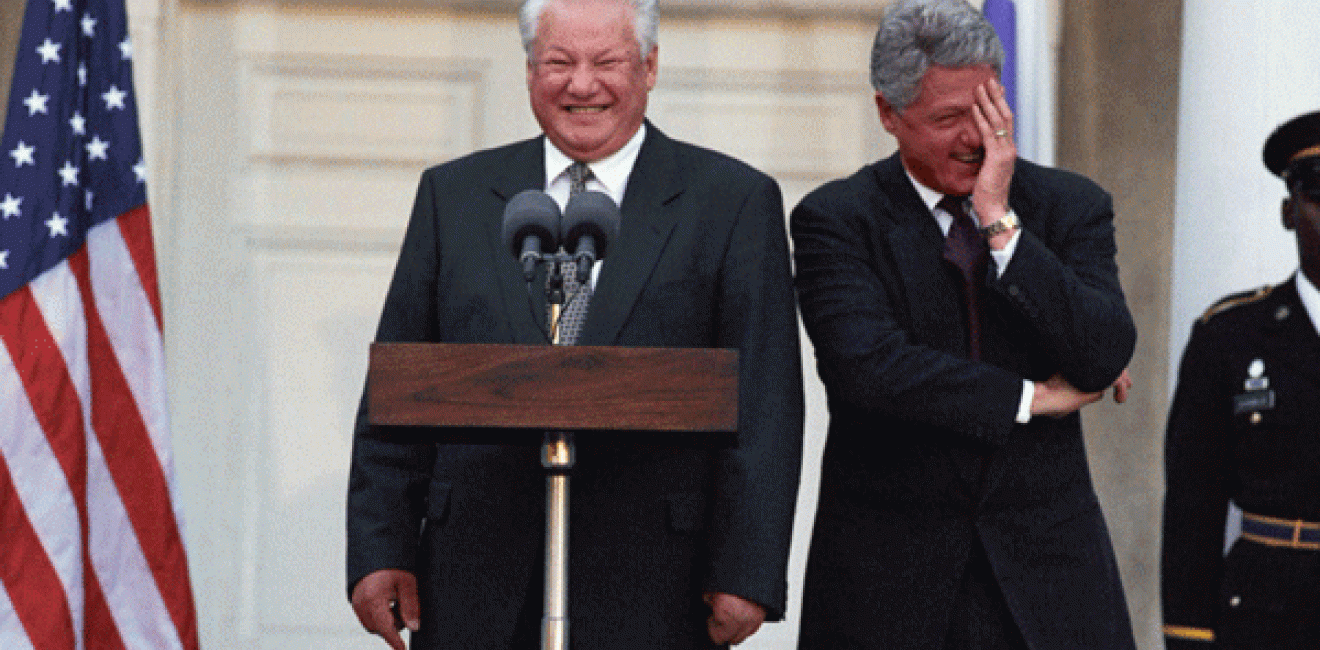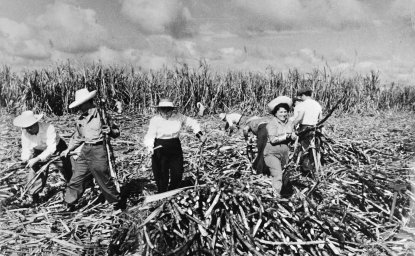The Strobe Talbott papers on the State Department’s Virtual Reading Room are a must read for researchers interested in America’s post-Cold War statecraft and US-Russia relations in particular.
Currently, the Talbott collection comprises more than 3,000 documents that were declassified in response to a Freedom of Information Act (FOIA) request and lawsuit by the National Security Archive (FOIA Number F-2017-13804). The materials cover many different threads in Talbott’s work as Deputy Secretary and ambassador-at-large and special adviser to the Secretary of State for the newly independent states of the former Soviet Union, including Ukraine’s denuclearization, NATO enlargement, the Clinton-Yeltsin summits, the Bosnia and Kosovo Wars, and Talbott’s pivotal role in US nuclear diplomacy with India and Pakistan in the late 1990s.
The collection, which is still being updated as more files are declassified and uploaded to the Virtual Reading Room, should be read in connection with other newly declassified materials and FOIA collections from the Clinton Library, the National Security Archive, and other repositories.
NATO, Russia, and the Post-Cold War Order
The Talbott papers are particularly revealing of the Clinton Administration’s patient statecraft for Russia’s inclusion in the post-Cold War order.
Clinton and his NATO counterparts worked very hard to engage Russia and to establish a strategic partnership in parallel to NATO enlargement. The Talbott papers bear out that Russia was not bullied and betrayed, as Russian President Vladimir Putin constantly claims in his attempts to portray Russia as the victim of Western policy. Rather, Clinton and his advisers were determined to support President Yeltsin based on their assumption that Russia was on a successful, yet slow trajectory towards becoming a modern and globally integrated democratic country, and one that was abandoning its imperial past – despite backlashes such as Yeltsin’s use of force against the Russian parliament in September 1993, the success of ultra-nationalist Vladimir Zhirinovsky in the Duma elections in December 1993, and the start of the Chechen War in December 1994.
President Clinton’s personal diplomacy with Yeltsin was essential for the US-Russia partnership, and in this regard Talbott played a key role.
Talbott, who speaks fluent Russian, sat in every Clinton-Yeltsin meeting and otherwise managed the Bill-Boris relationship. In 1993, the Clinton Administration was determined to use financial assistance in an effort to deal with Russia’s problems and keep Yeltsin in office. Talbott very much endorsed this approach, writing to Clinton that “you have convinced Yeltsin that you are serious about support for his program - that you really are committed to helping Russia make it into the 21st century as a great power and as a member of the community of democracies… No American President has ever had as much influence over a Russian leader as you do now.”[1]
In addition, in 1993, Talbott’s work focused on the trilateral US-Russia-Ukraine negotiations on Ukraine’s denuclearization, perhaps the most severe nonproliferation problem since the beginning of the atomic age. The Talbott papers detail US offers of financial help for the return of the weapons to Russia and technical assistance for their dismantlement in exchange for Russian assurances of Ukraine’s independence underwritten by the United States.
Time and again, Talbott’s Ukrainian interlocutors poured out their hearts, arguing that the Clinton Administration favored Russia at the expense of Ukraine. “You should have good relations with Russia, but don’t put all your eggs in one basket and don’t give the Russians a blank check,”[2] Ukraine’s President Leonid Kravchuk said. Finally, a trilateral solution was reached in January 1994.
The Regionalist and the Functionalist
In February 1994, Talbott was confirmed as Deputy Secretary of State. The new position implied a change: Talbott turned from a “regionalist” into a “functionalist,” a distinction elaborated upon in Talbott’s memoir Engaging India.
As a “regionalist,” Talbott’s task had been to develop good relations with Russia and the newly independent countries of the former Soviet Union. As a “functionalist,” his overarching objective was to advance stability and integration for all of Europe by balancing engagement with Russia and NATO enlargement.
Talbott was not Russocentric. The Clinton Administration had to reassure Russia’s neighbors emphasizing that American would protect them from any new nationalism in Moscow. In early 1994, Talbott observed that “the challenge that the West now grapples with is how to encourage Russia to stay on the course of peaceful integration with the rest of the world even while Russia picks itself back up off the floor... As Russia recovers, its foreign policy pronouncements have become more assertive in tone. The trick for the West is to discourage the Russians from following up their assertive tone with aggressive action.”[3]
“We shouldn’t do anything to compromise the alliance’s ability to deal with the worst even as we work for the best,”[4] he reiterated.
In 1995, Talbott increasingly emphasized the importance of NATO enlargement in public. In August of that year, he published a much-noticed article in the New York Times Review of Books reiterating the rationale for enlargement and underlining NATO’s continued relevance as a collective security organization and a hedge in case Russia would turn bad one day.
At the same time, the Clinton Administration did not rush enlargement. Launched in 1994, NATO’s Partnership for Peace Program (or PfP) put enlargement at the end, rather than the beginning, of a long-term process. In other words, the PfP bought time for the stabilization of the NATO-Russia relationship.
Still, Yeltsin was afraid that NATO enlargement could endanger his prospects for reelection in the summer of 1996. Thus, NATO only started specific steps on enlargement in 1997. Moreover, in December 1996, NATO announced that its political enlargement would not be accompanied by a military policy against Russia. As a way to assuage Russian concerns, NATO announced that it had no intention, reason, or plans to deploy nuclear weapons on the territory of its newest members. Moreover, NATO refrained from deploying permanent foreign combat forces in Central and East Europe.
The Talbott papers also depict Russia’s campaign against NATO enlargement. Russia’s new foreign minister, Yevgeny Primakov, fought a war of words as he tried to obtain additional concessions in the negotiations on the NATO-Russia Founding Act. When NATO announced the “three no’s” in December 1996, the Russian reaction was to downplay the significance of NATO’s concession. When Talbott informed Primakov about NATO’s concessions on December 2, 1996, the latter merely said: “Yes, we understood, but there wasn't anything really new there. We've heard it before. What we really need to do is tackle the infrastructure problem [of NATO enlargement].”
Talbott’s response was: “There you go again, Yevgeny! That's a perfect example of what I was talking about earlier. Why can't you take "yes" for an answer?...You should declare victory rather than grumping about how what the best we can do isn't good enough.”[5]
NATO was arguing that its enlargement did not necessitate a military policy as long as Russia showed similar restraint. NATO’s assumption was that the emerging partnership with Russia and the potential for Russia’s integration were strong enough to limit the extent of NATO’s military engagement in Central and Eastern Europe. The idea was to establish a sustainable partnership reflecting the fact that NATO and Russia did not view each other as adversaries.
The US intention was to help Russia overcome its many problems. In 1997, Talbott told French President Jacques Chirac that “the Russian side is all screwed up. I don’t say that disrespectfully or to be patronizing,” but acknowledging the way that the Russians “have gone through one of the greatest traumas in history, with more sudden changes in their internal order, external relations, and ideology and in their very definition of statehood than any other country which has not lost a major war.”[6]
The Indo-Pak Nuclear Crisis
In addition to NATO-Russia diplomacy, the Talbott papers shed light on the Clinton Administration’s nuclear diplomacy towards India and Pakistan in 1998.
Talbott’s task was to help repair US-India relations after India’s nuclear tests in May 1998, which was followed by Pakistan’s first nuclear weapons test two weeks later.
Between June 1998 and September 2000, Talbott and Indian Foreign Minister Jaswanth Singh pursued a comprehensive dialogue. They met 14 times for discussions on security and nonproliferation and tried to find a way to establish a new phase of strategic cooperation. Their diplomacy paved the way for Clinton’s landmark visit to India in March 2000. Time and again, Talbott reiterated that “we must continue to push for positive movement and flexibility from India and Pakistan. The U.S. feels an obligation to all countries that have done ‘the right thing’ by signing the NPT, particularly those, such as Brazil and South Africa, which have given upon the nuclear option.“[7]
The Kosovo War
The Talbott papers also include a wealth of materials on the Kosovo War and the Clinton Administration’s efforts to maintain the US-Russia partnership during this conflict.
The Kosovo War did not blow up the relationship between Moscow and Washington, but it did put US-Russia ties in a much more difficult position. Starting in April 1999, Talbott worked with former Prime Minister Viktor Chernomyrdin and Finnish President Martti Ahtisaari to find a way for Milosevic to finally accept NATO’s demands for withdrawal from Kosovo.
Initially, Talbott told Ahtisaari that “the Russians believed they could apply pressure on Serbian President Milosevic, but did not think Milosevic would hand over his sword to a Russian.”[8] Eventually, he did. Chernomyrdin put real pressure on Milosevic, pushing him to accept NATO’s conditions for an end to the bombing. Chernomyrdin thought that “you’ll have 3–4 months and Yugoslavia will be flattened like a disk.”
Chernomyrdin loathed Milosevic as much as his American interlocutors did. “You know he’s a sick person and his nation doesn’t know what’s happening,”[9] he said in a pivotal meeting with Vice President Gore.
Nevertheless, the Kosovo War led to a nationalist groundswell in Russia and to changes in its government. In August 1999, Vladimir Putin was appointed Prime Minister. Clinton and Talbott sensed that Putin was not an enthusiast for Yeltsin’s reform agenda. At the same time, they believed Putin showed a pragmatic willingness for cooperation with the West. Clinton, according to the record of one “telcon” with Tony Blair, thought Putin was “a guy with a lot of ability and ambitions for the Russians. His intentions are generally honorable and straightforward, but he just hasn't made up his mind yet. He could get squishy on democracy.”[10]
Putin capitalized on the Chechen war to win the snap election in March 2000. The Clinton Administration was concerned that the cult of personality could lead Putin to overplay his hand and miscalculate that he could get away with an even larger war in the Caucasus, including a potential invasion of Georgia.
In December 1999, Strobe Talbott sent a clear message of warning emphasizing that “any Russian intervention in Georgia against the wishes of the Georgian authorities would significantly worsen already strained relations between Russia and the rest of the world.”[11]
[1] Letter Talbott to Clinton, 16 July 1993, FOIA, F-2017-13804.
[2] Moscow-13723 “Subject: Talbott/Gati Consultations in Kiev: Rebuilding Bridges,” 11 May 1993, in: FOIA, M-2017-11838.
[3] State-83881 “Subject: Secretary Christopher and Deputy Secretary Talbott Meeting wi/th. German CDU Caucus Leader Wolfgang Schäuble,” 31 March 1994, in: FOIA, F-2017-13804.
[4] State-79249 “Subject: “Deputy Secretary Talbott’s Meeting with British Officials on Russia,” 26 March 1994, in: FOIA, F-2017-13804.
[5] Memcon Talbott and Primakov, 4 December 1996, in: FOIA, F-2017-13804.
[6] Memcon Talbott and Chirac, 14 January 1997, in: FOIA, F-2017-13804.
[7] State-185379“Subject: Deputy Secretary Talbott briefs P-S and G-8 Ambassadors on U.S. Nonproliferation Strategy with India and Pakistan,“ 5 October 1998, in: in: FOIA, F-2017-13804.
[8] State-71512 „Subject: Acting Secretary Talbott's May 6, 0940 EDT Conversation with Finnish President Ahtisaari,“ 6 May 1999, in: FOIA, F-2017-13804.
[9] Memcon Gore and Chernomyrdin, 3 May 1999, https://clinton.presidentiallibraries.us/items/show/58574, 100.
[10] Telcon Clinton and Blair, 23 November 2000, https://clinton.presidentiallibraries.us/items/show/101679.
[11] State-244337 “Memorandum of Conversation – Meeting between the Deputy Secretary and Russian Prime Minister Putin, Moscow, 22 December 1999,” 29 December 1999, in: FOIA, M-2017-11844.








